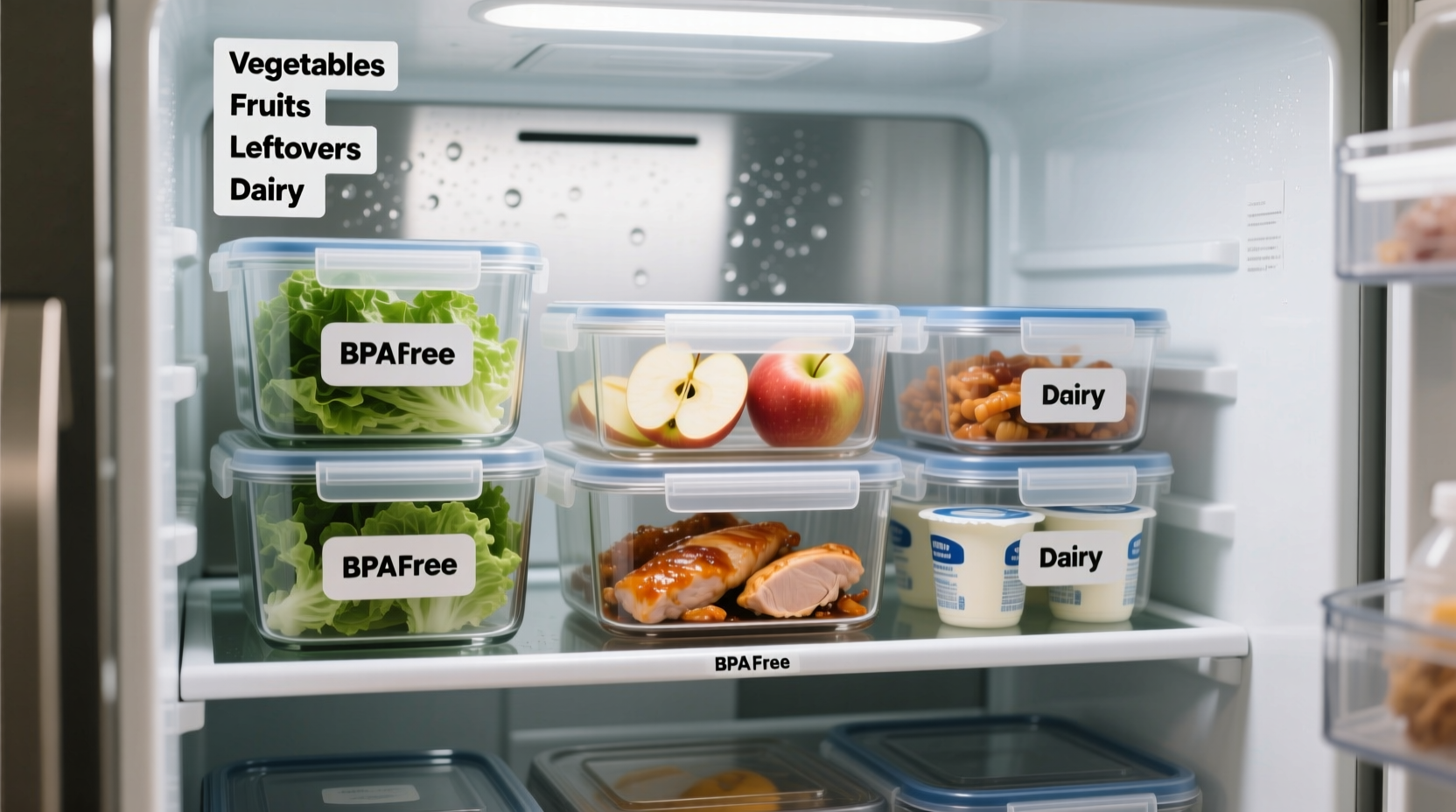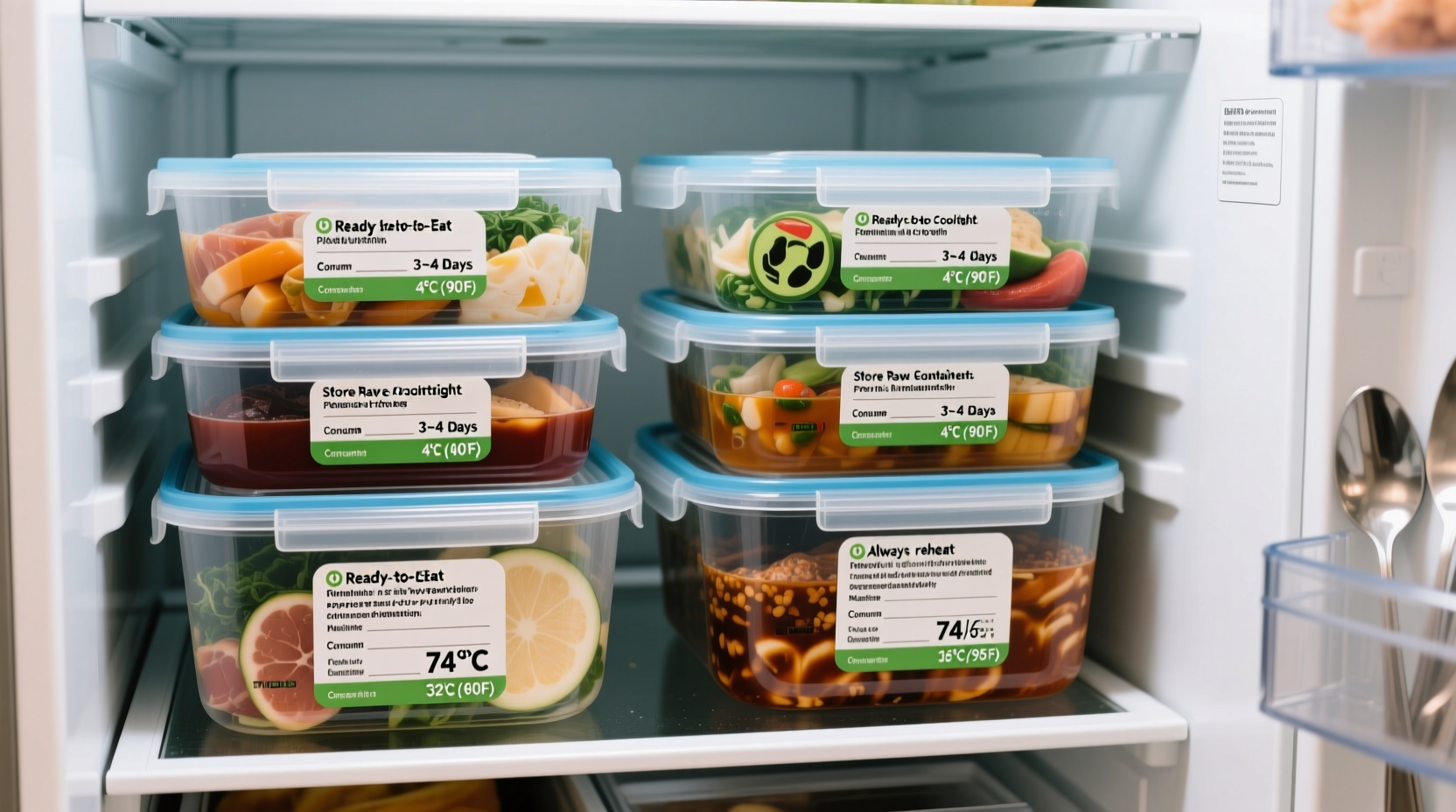Master Safe Food Storage: Your Complete Guide to Preserving Ready-to-Eat Meals
Discover exactly how to store cooled ready-to-eat food properly to maximize freshness, prevent foodborne illness, and reduce waste. This comprehensive guide delivers actionable steps backed by food safety experts—no guesswork required. Whether you're meal prepping for the week or storing restaurant leftovers, you'll learn the precise cooling techniques, container requirements, and storage timelines that keep your food both safe and delicious.
The Critical Cooling Window: Why Timing Matters
When ready-to-eat food sits in the temperature danger zone (40°F to 140°F), bacteria multiply rapidly. The FDA Food Code establishes the critical 2-hour rule: all cooked food must reach safe storage temperatures within 120 minutes. This timeframe shortens to 60 minutes when ambient temperatures exceed 90°F, such as during summer months or in non-air-conditioned spaces.
Professional kitchens use these proven cooling methods to meet safety standards:
- Ice bath immersion: Place food containers in ice water while stirring to accelerate cooling
- Shallow container transfer: Divide large portions into containers no deeper than 2 inches
- Vacuum cooling: Commercial technique using pressure reduction for rapid temperature drop
- Stirring with cold objects: Add sanitized ice packs or cold stainless steel paddles to stir food
| Food Type | Maximum Storage Time | Recommended Container |
|---|---|---|
| Cooked meats & fish | 3-4 days | Airtight glass or BPA-free plastic |
| Rice & grain dishes | 3-5 days | Vacuum-sealed containers |
| Salads with dressing | 1-2 days | Separate dressing compartment |
| Soups & stews | 3-4 days | Freezer-safe containers |
Step-by-Step Storage Protocol
Phase 1: Rapid Cooling Process
Begin cooling immediately after cooking completes. Never leave food at room temperature to cool naturally. Instead:
- Divide large batches into smaller portions using shallow containers
- Place containers in an ice-water bath, stirring every 5 minutes
- Monitor temperature with a calibrated food thermometer until below 70°F
- Transfer to refrigerator once below 70°F (continue monitoring until 40°F)
Phase 2: Proper Refrigeration Techniques
How you store food matters as much as cooling speed. Follow these evidence-based practices:
- Use containers with tight-fitting lids to prevent moisture loss and odor transfer
- Label containers with preparation date using waterproof markers
- Store at consistent refrigerator temperature (35-38°F optimal)
- Place newer items behind older ones using first-in-first-out system
- Keep raw meats on lower shelves to prevent cross-contamination

Avoid These Common Storage Mistakes
Food safety experts consistently identify these critical errors that compromise ready-to-eat food:
- The warm container myth: Placing still-warm food directly in the fridge doesn't harm appliances but does create condensation that promotes bacterial growth
- Improper container selection: Using takeout containers with loose-fitting lids allows air exposure
- Ignoring temperature fluctuations: Refrigerator temperatures rising above 40°F during power outages or frequent door openings
- Overlooking reheating protocols: Not bringing food to 165°F internal temperature before consumption
Special Considerations for Different Food Types
Not all ready-to-eat foods follow the same storage rules. The USDA Food Safety and Inspection Service provides specific guidance for high-risk categories:
Rice and grain-based dishes: These require special attention due to Bacillus cereus risk. Cool within 1 hour and consume within 3-5 days. Never reheat rice more than once.
Cut fruits and vegetables: Store in perforated containers to maintain proper humidity levels. Discard after 3 days regardless of appearance.
Dairy-containing dishes: Casseroles or sauces with dairy components have shorter shelf lives (2-3 days maximum) due to accelerated spoilage.
When in Doubt: The Safety Verification Process
Follow this professional verification sequence before consuming stored food:
- Check expiration date against storage timeline guidelines
- Inspect for visible mold or texture changes
- Smell for sour or "off" odors (discard if present)
- Check container integrity for leaks or damage
- When uncertain, follow the food safety maxim: "When in doubt, throw it out"
Extending Shelf Life Through Freezing
For longer storage, freezing remains the most effective preservation method. The National Center for Home Food Preservation confirms these best practices:
- Use freezer-safe containers with 1/2 inch headspace for expansion
- Vacuum sealing removes oxygen that causes freezer burn
- Blanch vegetables before freezing to preserve texture
- Freeze in single-serving portions for convenient reheating
- Consume frozen ready-to-eat meals within 2-3 months for best quality
Reheating Protocols for Maximum Safety
Proper reheating completes the food safety cycle. The FDA requires these critical steps:
- Thaw frozen meals in refrigerator, not at room temperature
- Bring soups and sauces to rolling boil for 3 minutes minimum
- Use food thermometer to verify 165°F internal temperature
- Stir food midway through microwave reheating for even heating
- Consume reheated food within 2 hours of reaching serving temperature
Food Safety Timeline: From Cooling to Consumption
Understanding the complete timeline helps prevent critical errors. This evidence-based sequence ensures maximum safety:
- 0-30 minutes post-cooking: Begin active cooling process
- 30-60 minutes: Reach below 70°F threshold
- 60-120 minutes: Achieve 40°F or below for refrigeration
- Day 1-3: Optimal consumption window for most foods
- Day 4: Final day for consumption of high-risk items
- Day 5+: Discard all perishable ready-to-eat foods
Professional Food Handler Certification Standards
Food safety professionals follow these additional protocols beyond basic home storage:
- Documented temperature logs for cooling and storage phases
- Color-coded containers to prevent cross-contamination
- Regular calibration of all thermometers (monthly minimum)
- Separate refrigeration units for high-risk populations
- Strict adherence to FIFO (First In, First Out) inventory system
Common Questions About Ready-to-Eat Food Storage
Can I store hot food directly in the refrigerator?
Yes, modern refrigerators can handle warm food without damage, but you must divide large quantities into shallow containers first. Placing large pots of hot food directly in the fridge creates temperature fluctuations that endanger other stored items. The critical factor is getting food through the danger zone (140°F to 40°F) within 2 hours.
How do I know if my refrigerator maintains proper temperature?
Use a standalone refrigerator thermometer placed in the center of the main compartment, not the door. Check readings daily, especially during hot weather. The USDA Food Safety and Inspection Service recommends maintaining temperatures at 40°F or below (ideally 35-38°F). Digital thermometers with remote monitoring provide the most accurate readings.
What's the difference between 'use by' and 'best by' dates?
'Use by' dates indicate when food may become unsafe to eat, primarily for perishable items. 'Best by' dates refer to peak quality, not safety. For ready-to-eat foods you've prepared, disregard commercial dates and follow the 3-4 day refrigeration guideline regardless of packaging dates.
Can I freeze food that's already been refrigerated?
Yes, but only if the food has been refrigerated for less than 24 hours. The USDA Food Safety and Inspection Service confirms that freezing extends safety timelines, but quality degrades with each temperature transition. Never refreeze food that's been completely thawed at room temperature.
How can I prevent freezer burn on stored meals?
Freezer burn occurs when air contacts food surfaces. Prevent it by using vacuum-sealed containers, removing excess air from freezer bags, and maintaining consistent freezer temperatures at 0°F or below. The National Center for Home Food Preservation recommends double-wrapping high-moisture foods and consuming frozen ready-to-eat meals within 3 months for best quality.











 浙公网安备
33010002000092号
浙公网安备
33010002000092号 浙B2-20120091-4
浙B2-20120091-4